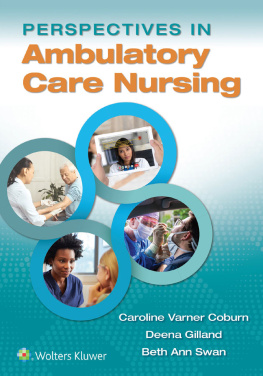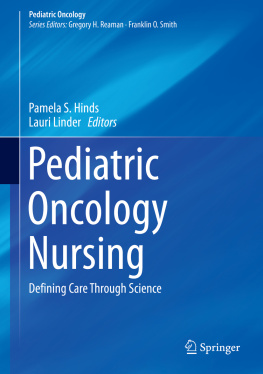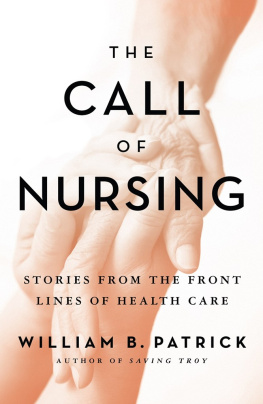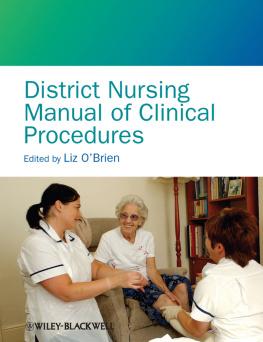Nurses Work: An Analysis of the UK Nursing Labour Market
Nurses Work: An Analysis of the UK Nursing Labour Market
James Buchan
Reader, Department of Management & Social Science, Queen Margaret College, Edinburgh
Ian Seccombe
Associate Fellow of the Institute for Employment Studies, Brighton
Gabrielle Smith
Research Fellow of the Institute for Employment Studies Brighton
First published 1998 by Ashgate Publishing
Reissued 2018 by Routledge
2 Park Square, Milton Park, Abingdon, Oxon, OX14 4RN
711 Third Avenue, New York, NY 10017, USA
Routledge is an imprint of the Taylor & Francis Group, an informa business
Copyright James Buchan, Ian Seccombe and Gabrielle Smith 1998
All rights reserved. No part of this book may be reprinted or reproduced or utilised in any form or by any electronic, mechanical, or other means, now known or hereafter invented, including photocopying and recording, or in any information storage or retrieval system, without permission in writing from the publishers.
Notice:
Product or corporate names may be trademarks or registered trademarks, and are used only for identification and explanation without intent to infringe.
Publisher's Note
The publisher has gone to great lengths to ensure the quality of this reprint but points out that some imperfections in the original copies may be apparent.
Disclaimer
The publisher has made every effort to trace copyright holders and welcomes correspondence from those they have been unable to contact.
A Library of Congress record exists under LC control number: 98771462
ISBN 13: 978-1-138-32658-3 (hbk)
ISBN 13: 978-0-429-44979-6 (ebk)
This book would not have been possible without access to the data and information provided by the nurses who have contributed to the annual surveys supported by the Royal College of Nursing. Our thanks are to the tens of thousands of nurses who have taken time out of their busy schedules to participate over the years, sustaining a consistently high response rate. The support of the Royal College of Nursing, and the commitment of its General Secretary, Christine Hancock, and its Director of Labour Relations, Phil Gray, have also been vital to the continued development of the surveys as a unique source of information on the nursing workforce in the United Kingdom. We acknowledge the other staff at IES who have contributed as authors to one or more of the annual surveys over the years. Richard Waite, Rosemary Hutt, Jane Thomas, John Stock, Jane Ball, Adrian Patch, Charles Jackson and Monica Haynes have all made a contribution. Finally, we would like to thank Carol Barber for helping to shape the final product.
James Buchan
Ian Seccombe
Gabrielle Smith
December 1997
Published in the midst of one of the worst shortage of nurses in the history of the National Health Service, this book is a timely reminder that we rarely learn from history. As we celebrate 50 years of NHS nursing and the huge contribution that nurses have made to the National Health Service, we also mark a 50 year history characterised by a lack of investment in planning the nursing workforce.
Nurses are by far the largest workforce in the health service. Yet poor workforce planning is perhaps inevitable when nursing is still thought of by some as an instinctive, caring job fit for any 'good woman'. Nursing has long suffered from myth making, but none worse that the myth which claims nurses are not interested in developing their skills as expert members of the health care team.
Employers, governments, research findings - and most importantly, patients - recognise the value of expert nurses. They realise that nurses provide cost effective, high quality care. But while everyone appreciates the value of expert nurses, we are still failing to invest properly in the planning, education and training of the nursing workforce. If we value the contribution that nurses make to the NHS, then we need to value their careers. It is impossible to do one without the other.
This book sounds a warning bell for the NHS. It paints a very clear picture of the challenges ahead, plugging many of the information gaps which previously made it impossible to pull together a comprehensive overview of the nursing labour market. Yet unlike other warning bells, this time we need to learn from history. The stakes are too high if we ignore it.
Christine Hancock, General Secretary of the Royal College of Nursing
Recent years have seen significant changes in the labour market behaviour of registered nurses and in their patterns of employment and career opportunities. The growth of employment outside the National Health Service (NHS), the emphasis on developing community based care, and organisational change in the NHS acute sector, have all impacted on the nursing labour market, as have broader economic and societal factors.
The nursing workforce is the core of the health services, both in the NHS and the private sector. With over half a million registered nurses in work, nursing is currently the largest source of professional employment for females in the United Kingdom (UK). The NHS nursing paybill, estimated by the Review Body to be 7,857 million in 1996-97, accounts for 3 per cent of all public sector expenditure. For such a large and important group, nursing has received comparatively scant attention in terms of evaluating employment policy and practice.
Over the decades there have been a series of often sterile, and sometimes ill informed, debates about trends in nursing employment, the 'right' number of nurses to recruit, and issues of nurses' pay, morale and labour market behaviour. The aims of this book are to provide a definitive profile of the UK nursing workforce, to highlight some of the issues facing nurses at work, and to present a critique of approaches to nurse workforce planning in UK nursing. In order to achieve this, the book:
- establishes the current profile of the UK nursing labour market;
- identifies key trends in labour market behaviour and career paths of nurses;
- highlights changes in non-NHS employment;
- identifies gaps in official data provision;
- assesses implications for policy makers of likely key trends and other labour market related issues ( eg end of 'job for life', changes in demand, flexible working, ageing workforce, growth of new labour markets, organisational change etc .); and
- undertakes supply modelling to test different assumptions on intakes to pre-registration nurse education and future trends in staffing.
The book makes use of data from official sources, but also draws heavily from the various studies undertaken by the Institute for Employment Studies (IES), and commissioned by the Royal College of Nursing (RCN). The Institute has conducted twelve national surveys of registered nurses for the RCN since the mid 1980s. These surveys provide a unique source of data on the experiences and opinions of nurses in the UK. They have been conducted during years of significant change in nurses' labour market behaviour and in their patterns of employment and career opportunities.
Some of the key changes which provide the backdrop for the book are the NHS reforms, changes to NHS nurses' pay determination and employee relations, and the restructuring of nurse education in the UK ('Project 2000'). The effects of these changes will be considered in detail in subsequent chapters. Their main features are discussed below.










